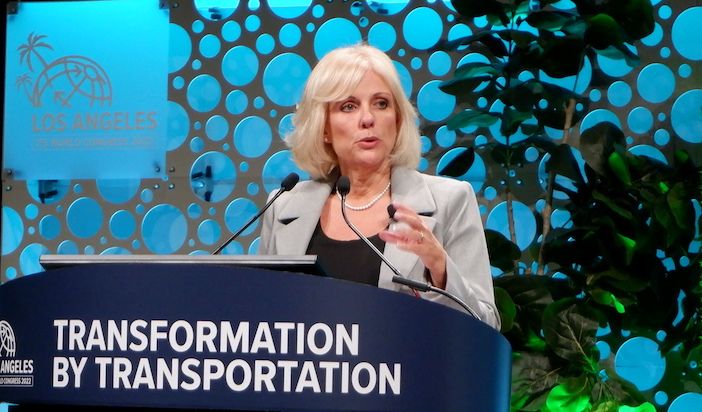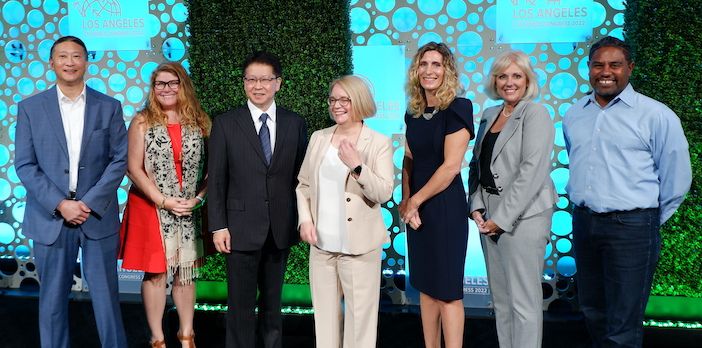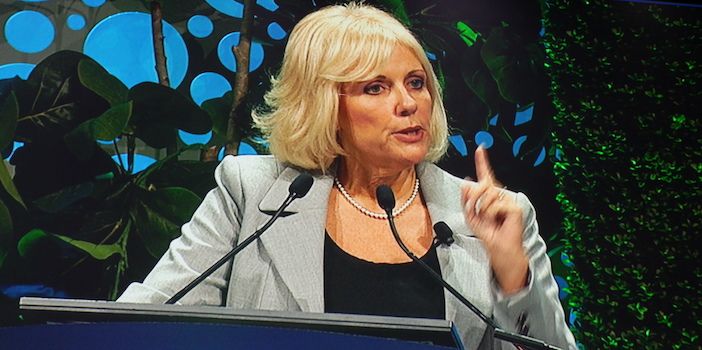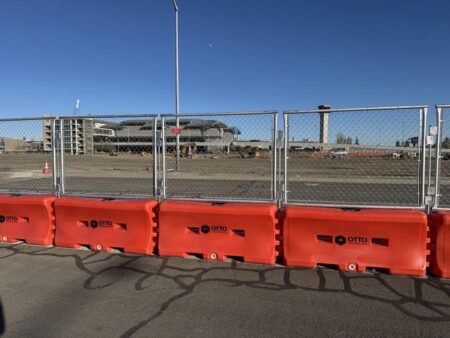Attendees at the ITS World Congress in LA were given a dramatic wake-up call at Tuesday’s (September 20) plenary session when NTSB chair Jennifer Homendy used her keynote to highlight a number of tragic, fatal road crashes that could have been prevented with V2X, if only it had been implemented.
Her frustration with the ITS community was clear when she listed how the National Transportation Safety Board (NTSB) she heads up had recommended back in the 1990s that V2X be deployed urgently to save lives, and yet, today, it is still to scale.

“We’ve seen tons of crashes that could have been prevented with V2X technology,” she said “We’ve had 27 years of inaction since we made recommendations on connected vehicles. So, what are we waiting for? I say that as someone who often meets a victim’s family. It is the hardest part of my job to meet with families and look them in the eye and tell them that the crash was preventable, that we’ve issued recommendations, but there was no action.”
V2X isn’t the only safety technology that Homendy is eager to speed the implementation of. Citing the example of a recent crash that killed seven children, which was caused by a driver impaired by alcohol and marijuana, she added, “Today, we’re calling on NHTSA to implement technology to prevent impaired driving. This can be done. We’ve been recommending it for years. Impaired driving kills close to 12,000 people. What are we waiting for?’
Homendy also voiced her support for technology to prevent speeding and monitoring systems to detect distracted driving; along with automotive safety technologies such as automatic emergency braking, forward-collision warnings, lane-departure warnings and blind-spot monitoring.

“But remember, from our perspective, technology is only part of the solution. It’s a key part of the safe system, but it’s not all of it,” said Homendy. “I’m going to use a quote from Kea Wilson, who writes for Streetsblog – ‘If ending car crash deaths is our actual goal and not just a catchphrase, we will treat collisions as both an outrage and a tragedy and more importantly an opportunity to talk about how to build a world where there are no crashes. We can do so much more than more and shrug and cast blame after people die. Instead, we can radically expand the radius of our compassion and urgently pursue life saving strategies outside our comfort zone.’
Homendy closed her keynote saying: “If we don’t act, true vision zero will forever remain out of our reach. We know how to save lives and what needs to be done. It means implementing technology we have right here, right now to save lives. It means focusing on the design of our roads and our infrastructure. It means promoting and enforcing safe driving behavior. It means setting safe speeds. It means holding manufacturers accountable for how cars are designed and what technologies they include. And it means getting regulators to act. It means implementing NTSB recommendations, too many of which are decades old. It means accepting zero is the only goal. It means redesigning the system to help protect all road users, not just drivers. And that means protecting people even when they make a poor decision. That is how we get to zero for all people. all road users, no matter their race, their ethnicity, ability or income no matter whether they’re driving, walking, biking or rolling. That is the safe system approach and technology plays a starring role.”

Homendy’s keynote was followed by a panel discussion on the best ways forward hosted by David S. Kim national transportation policy and multimodal strategy principal at WSP USA. The panellists were: Minna Kivimäki permanent secretary of the National Police Agency, Finland; Nat Beuse, VP of safety at Aurora; Kobayashi Yutaka, deputy director general of the Traffic Bureau, National Police Agency, Japan; and Seleta Reynolds chief innovation officer for LA Metro.





